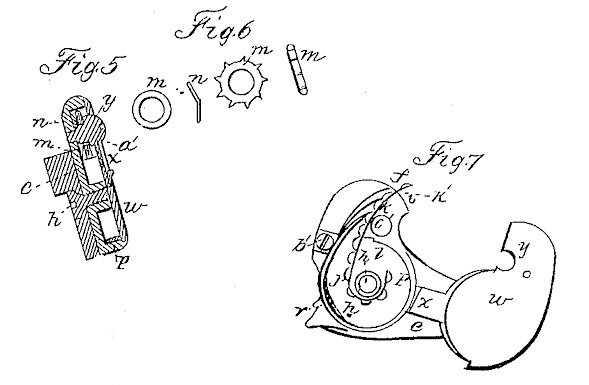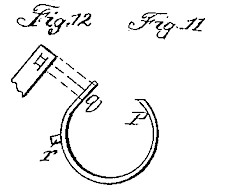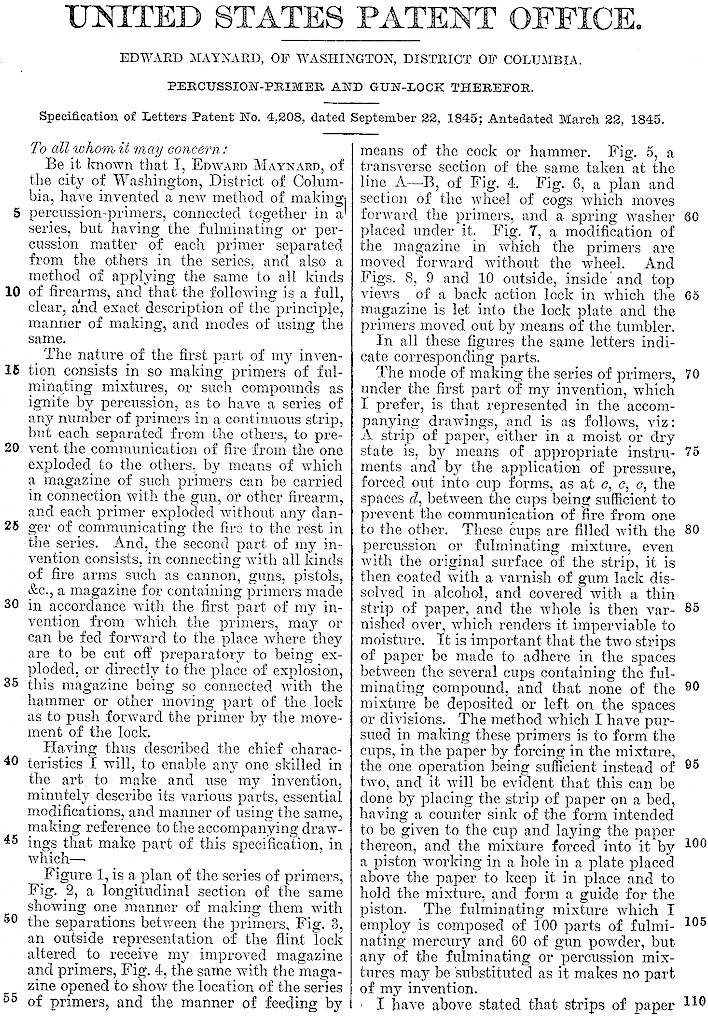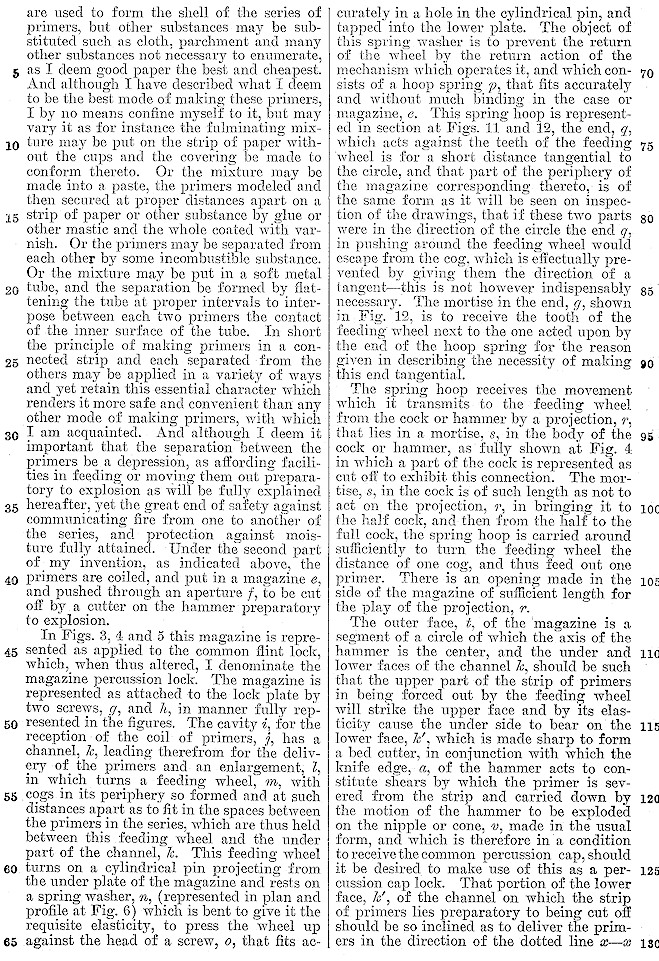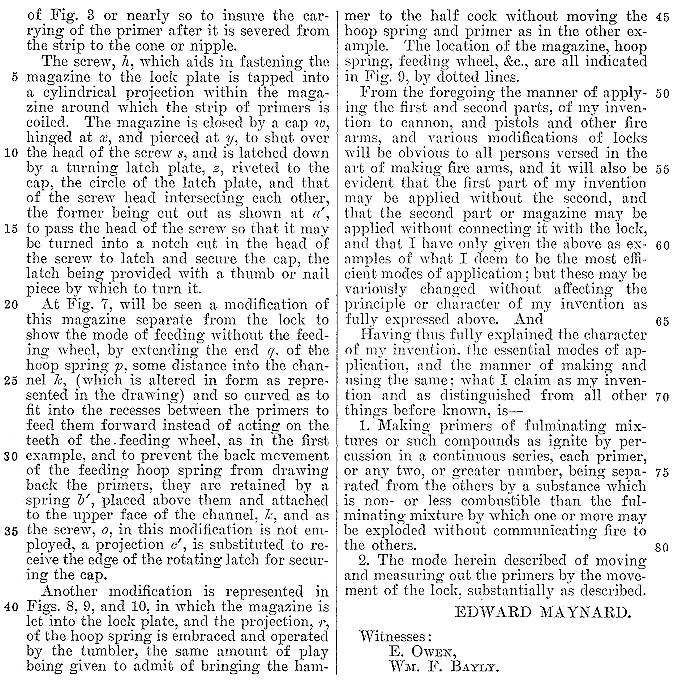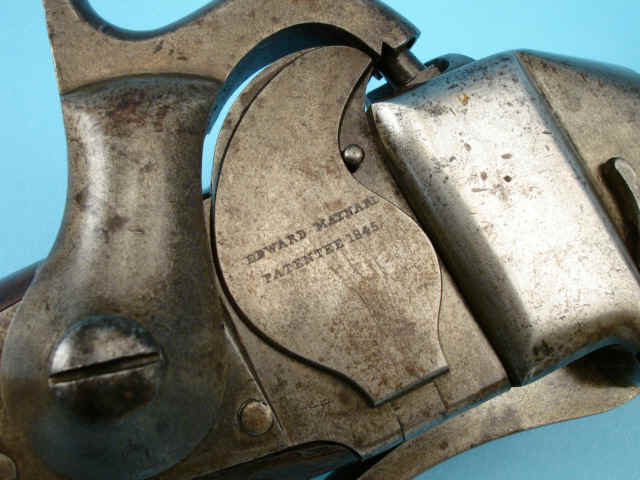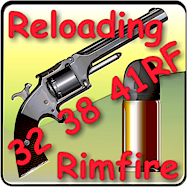|
Maynard system implemented into a Sharps 1855 rifle
Maynard's Firearms InventionsMaynard invented many dental methods and instruments, but is most famous for his firearms inventions. He achieved lucrative fame for his first patent, an 1845 priming system which cycled a small gunpowder charge to the nipple of a percussion cap firearm. Maynard's system used a magazine from which a paper roll, not unlike modern cap guns, advanced a charge over the nipple as the gun was cocked. Theoretically this accelerated a gun's rate of fire as the shooter could concentrate on loading and firing the gun. The system was quickly adopted by several commercial gun makers, and the United States government decided to test it. In 1845 the Maynard system was installed on 300 converted percussion muskets and trials were considered successful. Maynard turned over the patent rights to his priming system to the United States Federal Government in exchange for a royalty of $1.00 per weapon: a substantial sum at the time (the cost of making an entire 1861 Springfield was $18.00.) In 1855 the Maynard Tape Primer System was installed on all 1855 model .58 caliber military rifles and carbines made at Federal arsenals. However the system was complicated and often malfunctioned in wartime conditions. During the Crimean War British cavalrymen had been equipped with 2,000 Greene carbines, a Maynard system firearm, and the system was found to be unreliable in the field. In 1860 U.S. ordnance officers recommended dropping the Maynard Tape Primer System, and the famous 1861 Springfield rifle muskets did not use it. In 1851, however, Maynard had patented a more successful idea: a simple lever-operated breechloading rifle, which used a metallic cartridge his own invention. When the gun's lever was depressed the barrel rose, opening the breech for loading. Afterwards the lever was raised to close the gun's breech. Once cocked the loaded weapon could be primed by either placing a percussion cap directly on its nipple or by using Maynard's priming system to advance a primer to the nipple. The brass Maynard cartridge did not have an integral percussion cap; a small hole in the middle of its base fired it when the external cap was detonated. The cartridge, which had a wide rim permitting swift extraction, was reloadable up to 100 times. This proved to be a significant feature for the Confederate troops equipped with it. Another significant feature was that the use of a metallic cartridge prevented gas escape at the breech, a serious concern for early externally-primed breechloaders.
|
Other Patents HENRY Reloading .32 .38 .41 rimfire
cartridges Reloading pinfire cartridges
Ebooks Belgian poacher's gun
explained
|






